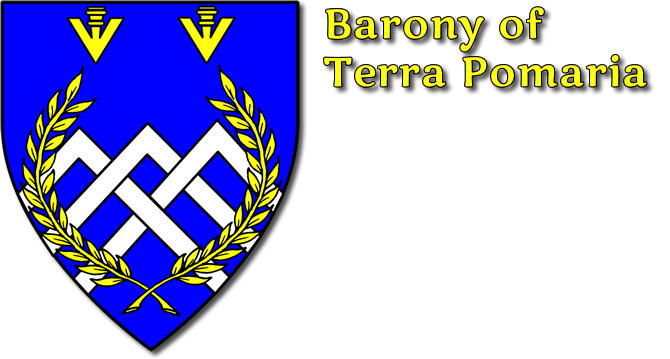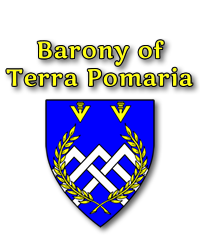19 Apr Savoury Tosted or Melted Cheese
Then Serve It Forth…
By Lady Rosemary Willowwood de Ste. Anne
Spring is upon us, and the first promise of plenty shows in the flush of new spring grass. The cows have calved and are “freshening”, which means plenty of milk and cream for butter and cheese. Thomas Tusser devoted a whole poem in his “Five Hundred Points of Good Husbandry” to proper making of cheeses, with directions to “Cisley”, the name he gave to the dairymaid. I will have more comments about Master Tusser and his comments on cheese below. However, since cheesemaking is a bit complicated for this column, I will offer a recipe from Sir Kenelme Digbie for using the cheeses that Cisley provides.
“Savoury Tosted or Melted Cheese”
From The Closet of Sir Kenelme Digbie, Knight, Opened
Published by his son’s consent, London, 1669
Cut pieces of quick, fat, rich, well tasted cheese (as the best of Brye, Cheshire, &c. or sharp thick Cream-Cheese) into a dish of thick beaten Butter, that hath been served for Sparages or the like, or pease. or other boiled Sallet, or ragout of meat, or gravy of Mutton: and, if you will, Chop some of the Asparages among it, or slices of Gambon of Bacon, or fresh-collops, or Onions, or Sibboulets, or Anchovis, and set all this to melt upon a Chafing-dish of Coals, and stir all well together, to Incorporate them; and when all is of an equal consistance, strew some gross White-Pepper on it, and eat it with tosts or crusts of White-bread. You may scorch it at the top with a hot Fire-Shovel.
TRANSLATION: Again, with Digbie, no translaton is really necessary. A few terms, such as “Sparages”, Gambon”, “collops”, and “Sibboulets” are explained in the glossary.
REALIZATION: Shred about three cups of firm cheese. I will offer comments about types below. Warm about 1 cup of heavy cream in a double boiler or chafing dish just until it begins to steam. Sprinkle in the cheese gradually, while stirring the cream. Stir gently until the cheese melts, and becomes of a smooth consistency. .Stir in a few grinds of pepper; if using white pepper, you will need a bit more to taste. Spoon over slices of toast, or crusty bread to serve. The dish may be made more hearty and varied by stirring in additions like finely chopped onions, bacon bits, bits of ham, or vegetables like asparagus tips or petit pois just before serving. If you have a taste for “little fishes”, trust Sir Kenelme and stir in a few finely chopped anchovies before serving. However, the key to any addition is to add it JUST before serving. The cheese should dominate in this dish; you want the additions robed in melted cheese, not the cheese to taste of the additions.
Some cautions here. You can make this in a pan without a double boiler, but you need low heat, a light touch, and a sharp eye. If you would like to lower the fat content a bit, you can make a light or medium white-sauce with milk, to use in place of the cream. Only be sure to let it cool slightly from the boil before adding the cheese. Patience is the key here; this dish is NOT fast food. If the cheese gets hot too suddenly, you will end up with a stringy mass, not smoothly melted cheese. Similarly, sprinkle the cheese into the warning cream slowly, not in large clumps. A handful of shredded cheese dropped all at once into boiling milk instantly becomes an intractable lump, which will toughen and get stringy before it melts. Slowly but surely does the trick.
If some of you have wandered through your mothers’ or grandmothers’ cookbooks, you may have already recognized this dish as “Welsh Rabbit” or “Welsh Rarebit”. The only modern additions are dashes of dry mustard, cayenne, or Worcestershire sauce. Any of these would have been satisfactory to Digbie, and their medieval analogs were probably added by individual cooks as their tastes dictated.
My research has indicated that Cheshire was the traditional cheese for Welsh Rabbit, which is consistent with Digbie’s recipe. You can also use Brie or Cheddar. Swiss cheeses, Monterey Jack, or mozzarella are cheeses to stay away from for this recipe, as they don’t melt smoothly and tend to “string” when melted. (Remember those strings of cheese that trailed from the piece of hot pizza you picked up? Not a good idea in this dish.) I also recommend you try the dish with WHITE cheddar, rather than our modern orange stuff. Cheeses in Digbie’s time were not commonly colored with herbs like annatto.
Tusser’s poem about the characteristics of good cheese was adapted from a similar poem in Le Menagier de Paris [The Goodman of Paris], c. 1393, (Translation by Power and Colton). I will here give you the English translation, but if you would like to compare the French or Latin versons, I will gladly supply them. The Goodman said a good cheese should be “Not white as snow, like fair Helene,/ Nor moist, like tearful Magdalene,/ Not like Argus, full of eyes,/ but heavy, like a bull of prize./ Well resisting thumb pressed in,/ and let it have a scaly skin./ Eyeless and tearless, in color not white,/ Scaly, resisting, and weighing not light.” A light buttery color meant a high fat content; weeping or too moist meant not enough whey had been pressed out, and the cheese would not keep well. Holes or eyes meant a strain of bacteria that produced pockets of carbon dioxide while the cheese was still soft and green (apparently they didn’t like Swiss-style cheese), and firm, heavy cheese meant it had dried and cured enough to keep well. The scaly skin was from salt that was either rubbed on the rind or a brine the cheese was soaked in for a few days before curing. Anything to keep that precious tasty cream healthy and available.
Finally, Digbie’s “butter sauce” was much like modern whipped butter, where a quantity of water was beaten into softened butter to expand and stabilize it. However, whipped REAL butter is hard to find these days. I recommend you stick with the cream. Or if you’re really adventurous, use beer instead!
GLOSSARY:
Sparages: Asparagus. Also called “spear-grass” or “spargel”.
Collops: A small piece or slice of food, especially of meat.
Gambon: from old North French gambon, or ham, from gambe, leg. In British usage, the lower end of a side of bacon. Also called “gammon”.
Sibboulets: translation somewhat uncertain. Most likely related to “cibblings” (defined previously in the glossary), the Welsh onion. The Scots called this onion “cibol” with the “l” frequently not pronounced. “Sibboulets” probably meant chopped or small cibols. Like many other medieval words, there were as many spellings as there were spellers.
Fire Shovel: an implement almost like an antique soldering iron, heated to red-hot in the fire and used to toast surfaces of dishes where the whole thing could not be broiled. Modernly called a “salamander”, IF you can find one!



